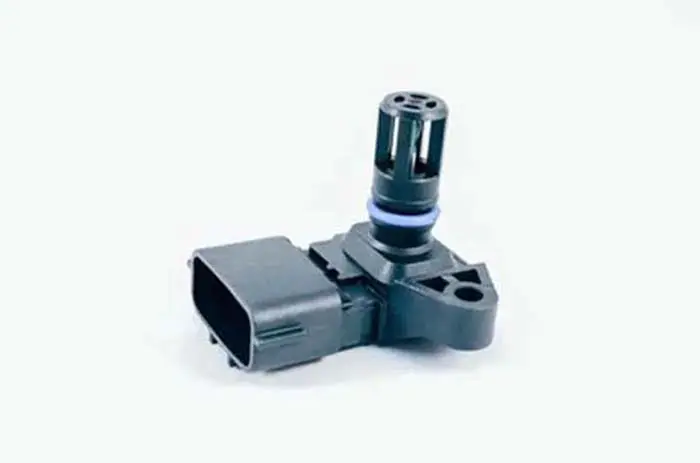
In most of the cars that are being manufactured or have been manufactured in the past couple of years the consumption of fuel and other operations related to the engine of the car are controlled by a series of sensors and a computing device.
A MAP (Manifold Absolute Pressure) sensor is one such sensor.
In this powerful guide, you will quickly learn what is MAP sensor, its function, & working in easy-to-understand language.
Related Post: How To Clean MAP Sensor: 7 Steps (With Pictures)
What Is MAP Sensor In A Car
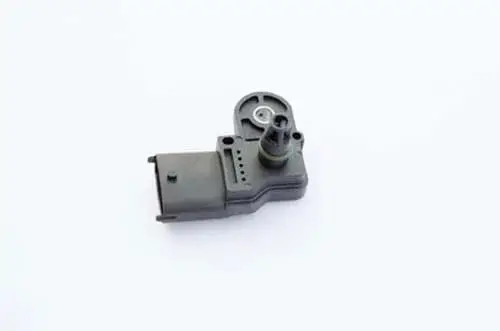
The MAP sensor or manifold absolute pressure sensor also called Engine Load Sensor, Pressure Sensor, or Boost Sensor is used to read the amount of pressure of the car engine’s intake manifold and sends it to the ECU to control the fuel injection amount.
It is used in place of the MAF sensor. It measures the density of air in the intake manifold rather than the mass of air flowing to the engine as the MAF sensor does. It is composed of semiconductors and is a very tiny vacuum sensor, which uses the piezoelectric resistance effect.
In a car that needs fuel injection for its work, the manifold absolute pressure sensor is used, so the amount of air flowing continuously into the car’s engine is measured.
This allows the computing device to calculate the density of the air, keeping all the figures in calculations. This calculation helps the computing device to decide upon the amount of fuel that must be sprayed in the internal combustion engine (ICE) combustion chamber.
A map sensor works together with an engine speed sensor and intake air temperature sensor to precisely inject the amount of fuel into the engine cylinder. It is because cooler air is dense and holds more oxygen, which demands more fuel and vice versa. And similarly, a higher speed requires more fuel, and vice versa.
Now, you will be surprised by knowing why this sensor is named the manifold absolute pressure sensor. The reason is when you measure any kind of pressure regarding the air pressure is called atmospheric pressure and when you measure the pressure regarding the vacuum is called absolute pressure.
So, a map sensor measures the intake manifold pressure according to the vacuum present inside of the map sensor, that’s why it is called manifold absolute pressure.
In some cars, the MAF (Mass Air Flow) sensor is used to measure the flow of air entering the engine. The MAP and MAF sensors are sometimes considered to be interchangeable. They are basically different when it comes to the mode of measurement.
A MAF sensor measures the mass of air flowing through the sensor whereas the MAP sensor measures the density of air for its proper measurement.
MAP Sensor Function
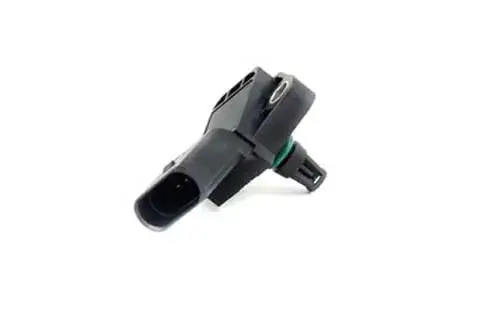
The function of the manifold absolute pressure is to provide the instantaneous pressure of the intake manifold to the electronic control unit (ECU) of the car.
The data provided by the manifold absolute pressure sensor is used by the ECU of the car, which further determines the absolute quantity of the fuel that the engine can use so that no excess oxygen or unburnt fuel is left.
This helps the car’s internal combustion engine to work properly with no toxic fuel and ensures the steady running of the car with the help of precise stoichiometric calculations to ensure proper combustion. It also helps the engine in determining the timing for the ignition by giving it the total mass air flow statistics at all times.
Related Post: What Happens If You Unplug A Map Sensor
How Does A MAP Sensor Work
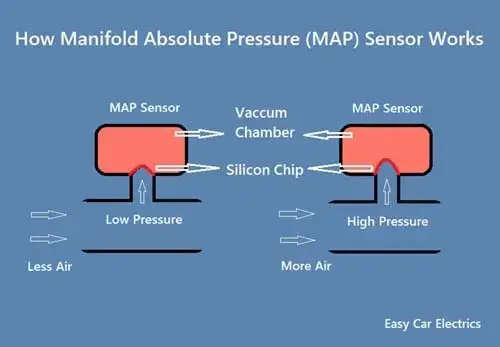
The MAP sensor of the car is one of the most important parts of the vehicle, and proper working of the MAP sensor is mandatory for the normal working of the vehicle.
The manifold absolute pressure sensor works by the changes induced by the intake air pressure applied on the silicon chip thus changing the electrical resistance and output voltage value.
The manifold absolute pressure sensor measures the intake manifold pressure to calculate the intake air volume. Inside the MAP sensor, there is a sealed vacuum chamber that either has a perfect vacuum or a calibrated pressure and on the other side is the intake manifold air pressure to be measured.
The sensor consists of a Piezoresistive resistance, which is a small flexible silicon chip. The silicon chip deflects according to the intake air pressure, which causes the change in resistance and also output voltage, which is sent to the electronic control unit (ECU) of the car to adjust fuel according to the air.
When the engine is turned ON and has not started yet, there is atmospheric pressure inside the intake manifold, which is helpful in determining the air density.
When the engine is started, the pressure inside the intake manifold reduces and creates a vacuum and when the driver presses the accelerator pedal, more air enters the manifold, causing high pressure inside the intake manifold.
This high air pressure forces the silicon chip to flex upward, which causes the change in resistance and its internal circuitry then converts the change in current to the output voltage value. As the intake manifold pressure raises that decreases the resistance of the resistive element and the voltage signal raises.
Similarly, when the driver removes the foot from the pedal, less air enters and causes low pressure in the intake manifold; the silicon chip can come back to its idle position. As a result, you alter the resistance of the silicon chip and output voltage.
The ECU takes this voltage change and calculates it to feed the car’s engine with the stoichiometrically correct air-fuel ratio.
Related Post: How To Reset Map Sensor
Frequently Asked Questions (FAQs)
Assuming you are asking if a vehicle can be driven with a faulty MAP sensor, the answer is yes; however, it will run less efficiently. A MAP sensor measures the pressure inside the intake manifold and sends this information to the engine control unit (ECU). The ECU then uses this information, along with other data, to regulate fuel injection and ignition timing. Without accurate data from the MAP sensor, the ECU cannot make proper adjustments, which will result in decreased performance.
A MAP sensor is a key component in any engine management system, and as such, its cost can vary depending on the make and model of the car. Generally speaking, however, a MAP sensor will cost between $50 and $200.
Sign Up

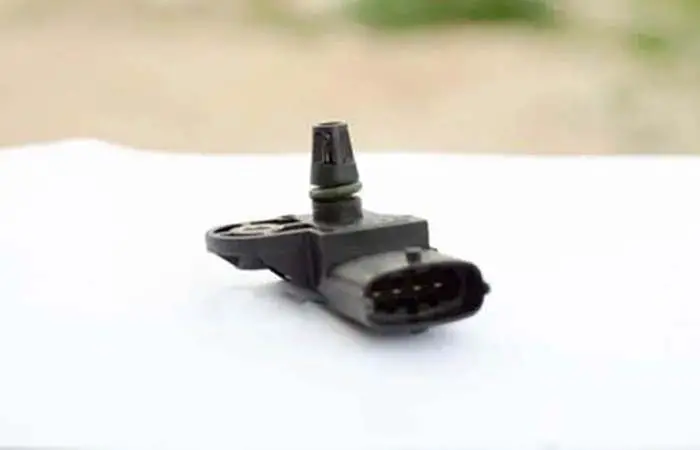
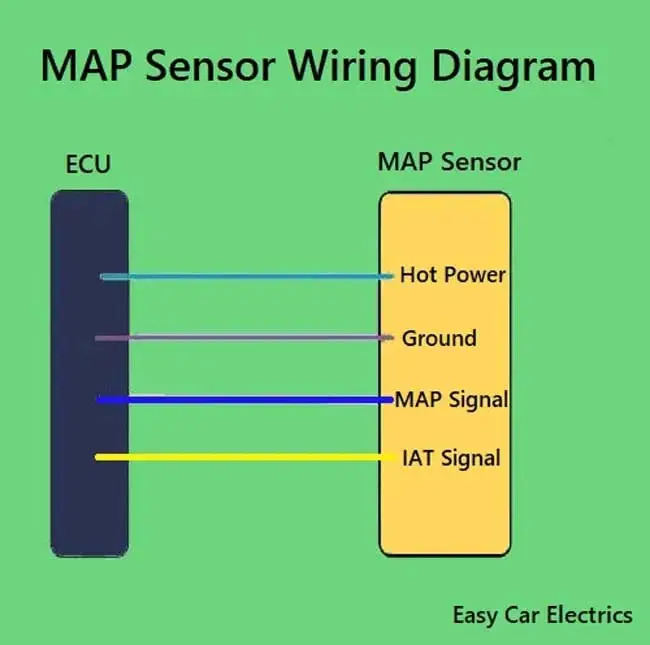
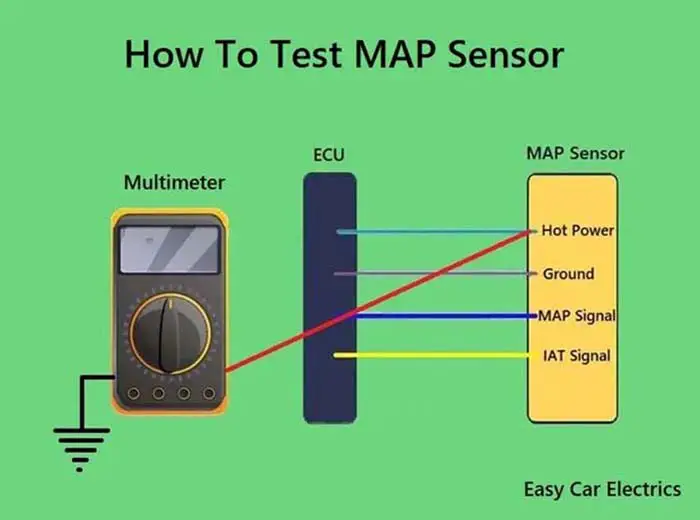

Good evening to you all, infact i delighted when I came across this website.I saw it very interesting and it enhanced my knowledge in automobile industry.
I wouldn’t resist if I can have the opportunity to relate and to discuss about any challenges.
Thanks very much and God bless.
adtob comp.auto mech., Thank you very much for your comment. Yes, I will be happy to discuss any problem